Religious travel in Kathmandu
Religious travel in Kathmandu offers a profound journey into the heart of Nepal's spiritual and cultural heritage. Kathmandu, the capital city, is a treasure trove of ancient temples, stupas, and shrines, making it a focal point for pilgrims and spiritual seekers from around the world. Here's an overview of what you can expect when embarking on religious travel in Kathmandu:
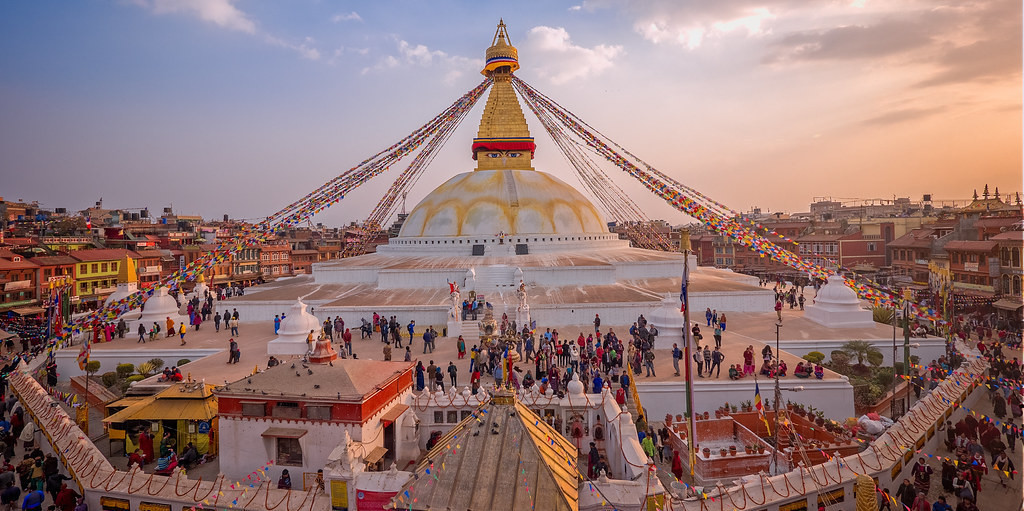
-
Pashupatinath Temple: It offers One of the most sacred Hindu temples in Nepal, Pashupatinath, is dedicated to Lord Shiva and attracts thousands of devotees each year. Situated on the banks of the Bagmati River, the temple complex is a UNESCO World Heritage Site and offers a glimpse into the religious practices, rituals, and the holy men, or Sadhus, who reside there.
-
Swayambhunath Stupa: Often referred to as the Monkey Temple due to the large population of monkeys that reside in the area, Swayambhunath is one of the oldest and most revered Buddhist stupas in Nepal. Perched atop a hill, it provides panoramic views of Kathmandu and is known for its iconic "eyes of Buddha" that watch over the city. The stupa is a symbol of enlightenment and is a must-visit for those seeking spiritual insight.
-
Boudhanath Stupa: Boudhanath is one of the largest stupas in the world and serves as a focal point for Tibetan Buddhism in Nepal. The stupa's massive mandala makes it one of the most imposing landmarks in Kathmandu. Surrounded by monasteries, Boudhanath is a center of pilgrimage and meditation. Walking around the stupa while spinning the prayer wheels is considered a meditative and spiritual practice.
-
Kathmandu Durbar Square: Although not a religious site in the traditional sense, Kathmandu Durbar Square is steeped in religious significance and history. It houses the Kumari Ghar, home to the living goddess Kumari, and is surrounded by numerous temples and shrines. The square is a testament to the city's rich cultural and religious life.
-
Budhanilkantha Temple: Situated at the foot of the Shivapuri hill, Budhanilkantha Temple is home to a remarkable statue of Lord Vishnu reclining on a bed of serpents. This site attracts pilgrims from all over the country, especially during the Haribodhini Ekadashi festival, which marks the awakening of Lord Vishnu from his cosmic sleep.
-
Religious Festivals: Participating in or observing the numerous religious festivals in Kathmandu is another way to immerse yourself in the city's spiritual culture. Festivals like Indra Jatra, Dashain, and Tihar are celebrated with great fervor, offering insights into the traditions and religious practices of the Nepalese people.
Religious travel in Kathmandu is not just about visiting temples and stupas; it's an immersive experience that offers a deep connection with the spiritual essence of Nepal. The city's rich tapestry of religious traditions, ceremonies, and festivals provides a unique window into the soul of Kathmandu, making it an unforgettable destination for those on a spiritual quest.
Pokhara
Pokhara stands as a serene and picturesque city nestled in the heart of Nepal, renowned for its stunning natural beauty and tranquil ambiance. Situated approximately 200 kilometers west of Kathmandu, it is the gateway to the treks in the Annapurna region, making it a haven not just for trekkers and adventure enthusiasts but also for those seeking peace and spiritual rejuvenation. Here’s what makes Pokhara a must-visit destination for travelers:
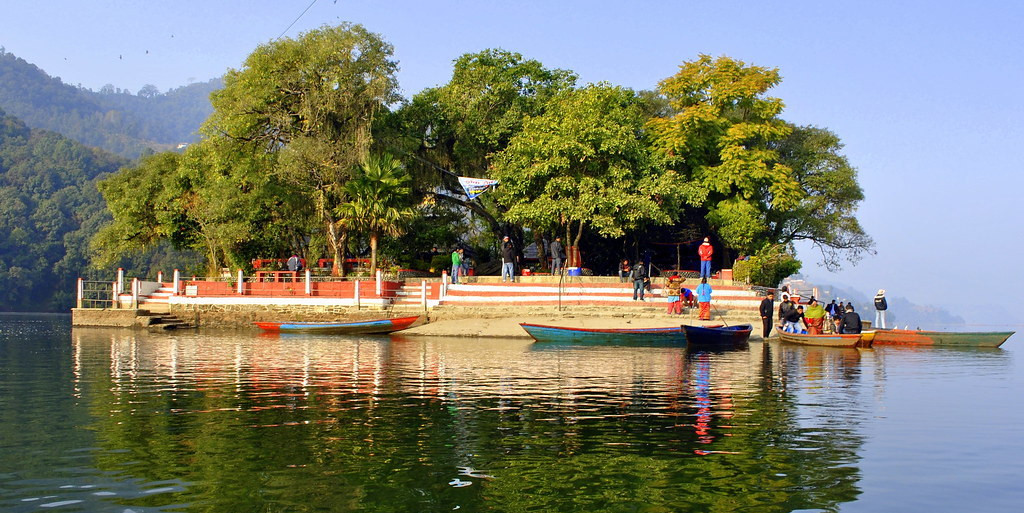
-
Natural Beauty: Pokhara is blessed with breathtaking natural scenery, including pristine lakes, lush forests, and spectacular views of the Annapurna range. Phewa Lake, the second largest lake in Nepal, is the jewel of Pokhara, offering opportunities for boating and fishing, or simply enjoying the reflections of the Machhapuchhre and Annapurna mountains in its tranquil waters.
-
Peace Pagoda: The World Peace Pagoda, situated atop a hill overlooking Phewa Lake, is one of Pokhara’s most serene sites. Built as a symbol of peace, this shining white stupa offers panoramic views of the surrounding mountains and the city below. It’s a perfect spot for meditation or contemplation.
-
Devi’s Fall: Also known as Patale Chhango, Devi’s Fall is a stunning waterfall located on the outskirts of Pokhara. The water plunges into a deep gorge, creating a mesmerizing spectacle that draws both locals and tourists alike.
-
Caves: Pokhara is home to several fascinating caves that offer a glimpse into the region’s natural and spiritual heritage. The Gupteshwor Cave, for instance, houses a sacred Shiva temple, while the Mahendra Cave is known for its stalactites and stalagmites.
-
Adventure Sports: Apart from its spiritual and natural attractions, Pokhara is also the adventure capital of Nepal. From paragliding and ultralight flights offering aerial views of the Himalayas to bungee jumping, zip-lining, and white-water rafting, Pokhara has something for every adrenaline junkie.
-
Religious Sites: Pokhara’s spiritual landscape is dotted with temples and monasteries. The Tal Barahi Temple, located on an island in the middle of Phewa Lake, is a significant place of worship for Hindus. The Bindhyabasini Temple, dedicated to the goddess Bhagwati, offers insights into the local religious practices and beliefs.
-
Cultural Immersion: The city’s cultural diversity is reflected in its various museums, including the Gurkha Museum, which celebrates the contributions of the Gurkha soldiers, and the Pokhara Regional Museum, showcasing the ethnic diversity and history of the region.
-
Trekking and Expeditions: Pokhara serves as the starting point for some of the world’s most famous treks, including the Annapurna Circuit and the trek to the Annapurna Base Camp. These treks offer unparalleled opportunities to experience the majestic beauty of the Himalayas up close.
Whether you’re drawn to Pokhara by the allure of its natural beauty, the serenity of its spiritual sites, or the thrill of adventure sports, the city offers a unique blend of experiences that cater to every type of traveler. It’s not just a destination; it’s a gateway to exploring the profound beauty and spirituality of the Nepalese Himalayas.
Muktinath
Muktinath is a sacred place revered by both Hindus and Buddhists, located in the Mustang District of Nepal, at an altitude of about 3,800 meters above sea level, near the Thorong La mountain pass. This site is part of the Annapurna Circuit, a popular trekking route in the Himalayas, and is known for its stunning natural beauty and spiritual significance. Muktinath's name is derived from Sanskrit words "Mukti" meaning salvation and "Nath" meaning lord or master, highlighting its essence as a place of liberation or moksha.
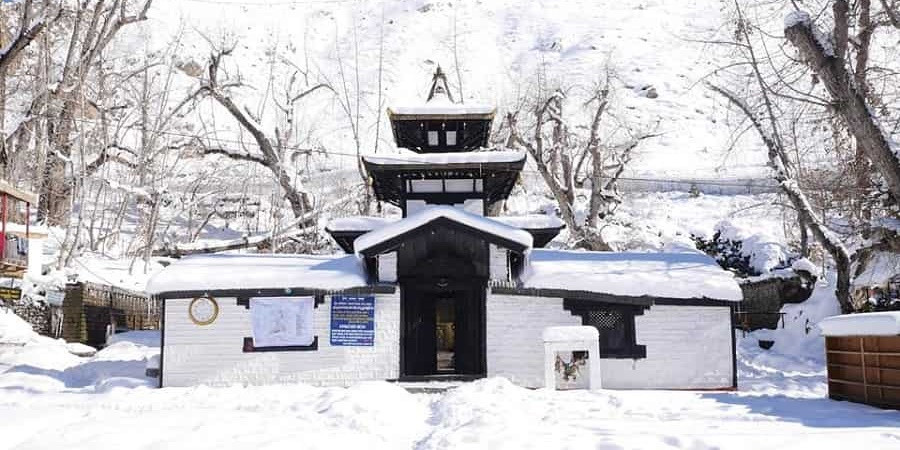
Muktinath is a sacred place revered by both Hindus and Buddhists, located in the Mustang District of Nepal, at an altitude of about 3,800 meters above sea level, near the Thorong La mountain pass. This site is part of the Annapurna Circuit, a popular trekking route in the Himalayas, and is known for its stunning natural beauty and spiritual significance. Muktinath's name is derived from Sanskrit words "Mukti" meaning salvation and "Nath" meaning lord or master, highlighting its essence as a place of liberation or moksha.
Spiritual Significance: For Hindus, Muktinath is a vital pilgrimage site dedicated to Lord Vishnu. It is considered one of the eight most sacred shrines (Svayam Vyakta Kshetras) and is also one of the 108 Divya Desam, or holy places of worship of Lord Vishnu. Pilgrims believe that bathing in the waters here ensures salvation after death. For Buddhists, Muktinath is significant as a place where Guru Rinpoche (Padmasambhava), the founder of Tibetan Buddhism, meditated on his way to Tibet. It represents a place where Dakinis (tantric deities) are said to have conversed with Guru Rinpoche, making it a powerful site for meditation and spiritual practice.
Key Features
-
Eternal Flame: At the heart of Muktinath Temple is a natural gas source that produces an eternal flame, a phenomenon that has fascinated visitors for centuries. This flame burns atop a spring, symbolizing the elements of earth, water, and fire uniquely coexisting in the same place.
-
108 Water Spouts: Behind the temple is a row of 108 bull-faced spouts from which holy water flows. Pilgrims bathe in the freezing water, believing it purifies the body and soul.
-
Jwala Mai Temple: Near the main Muktinath Temple is the Jwala Mai Temple, where the holy flame alongside a spring is worshipped. It's a rare sight where fire and water are seen together, symbolizing the divine power present at Muktinath.
-
Stunning Landscapes: The journey to Muktinath is as breathtaking as the destination itself, offering stunning views of the Himalayas, rugged mountain trails, and the unique beauty of the Mustang region.
-
Visiting Muktinath: The trek to Muktinath is part of the Annapurna Circuit, attracting not only spiritual seekers but also trekkers and adventure enthusiasts. Accessible by foot, jeep, or a short flight from Pokhara to Jomsom followed by a trek or jeep ride, Muktinath is a destination that combines spiritual journeying with adventure travel. The best times to visit are from March to May and from September to November when the weather is favorable for trekking.
-
Cultural and Spiritual Experience: Visiting Muktinath offers a profound cultural and spiritual experience. Pilgrims and visitors get a glimpse into the harmonious coexistence of Hindu and Buddhist traditions in Nepal. The journey to Muktinath itself is a rite of passage for many, symbolizing the arduous path to enlightenment and liberation.
Whether you are seeking spiritual solace, an insight into Nepali religious traditions, or simply the beauty of the Himalayas, Muktinath provides a unique and unforgettable experience.
Manakamana
Manakamana is a revered Hindu temple situated in the Gorkha district of Nepal, dedicated to the Goddess Bhagwati, an incarnation of Parvati. The name Manakamana originates from two words, "mana" meaning heart or soul and "kamana" meaning wish, indicating that the goddess fulfills the wishes of those who visit her shrine. Perched atop a 1,302-meter hill, the temple offers panoramic views of the Trisuli and Marsyangdi river valleys along with a majestic backdrop of the Himalayan range.
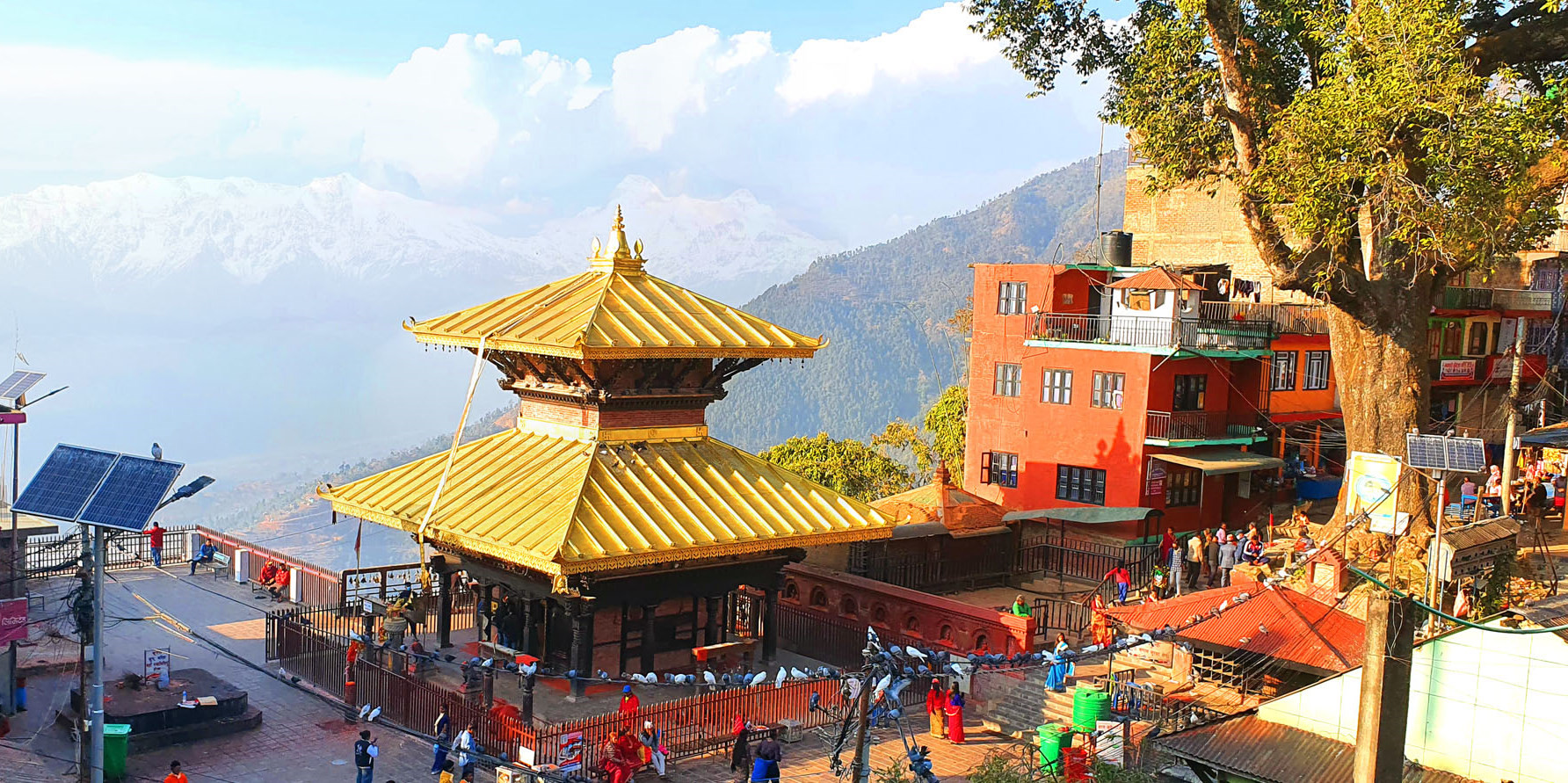
-
Spiritual Significance: The Manakamana temple holds a significant place in the hearts of both locals and pilgrims from around the world. It is believed that Goddess Manakamana grants the wishes of all those who make the journey to her temple to worship her with a pure heart. Many devotees visit the temple with offerings in the hope that their prayers will be answered.
-
The Cable Car Journey: One of the highlights of visiting Manakamana is the cable car ride from Kurintar to the temple. This journey offers breathtaking views of the surrounding hills and rivers. The cable car system was introduced in 1998 and has since made the temple more accessible to visitors, reducing the previously arduous trek to a convenient 10-minute ride.
-
Architectural Features: The Manakamana temple is built in the traditional pagoda style of Nepalese architecture. The square structure is adorned with intricate wood carvings and metalwork, reflecting the skilled craftsmanship of the Newari artisans. The sanctum houses the sacred image of Goddess Manakamana, which is not photographed out of respect for religious traditions.
-
Festivals and Rituals: The temple is especially busy during the Dashain and Nag Panchami festivals when thousands of devotees visit to offer sacrifices, mostly goats, chickens, or pigeons, to the goddess. These offerings are made in a dedicated area within the temple premises, adhering to ancient rituals.
-
Cultural Experience: Visiting Manakamana is not just a spiritual journey but also a cultural experience. The path to the temple and the surrounding area is dotted with small shops selling traditional Nepali handicrafts, religious paraphernalia, and local snacks. The journey offers insights into the daily lives and spiritual practices of the Nepali people.
Tips for Visitors
-
Dress modestly and respectfully when visiting the temple.
-
Be prepared for crowds, especially during festival times.
-
Take time to enjoy the stunning views and serene environment.
The Manakamana temple is a testament to the deep spiritual roots and rich cultural heritage of Nepal. Whether you are seeking blessings, fulfilling a pilgrimage, or simply exploring the diverse spiritual landscape of Nepal, Manakamana provides a unique and enriching experience.
Chitwan
Chitwan, located in the heart of Nepal, is renowned for its diverse ecosystems and rich cultural heritage, making it a must-visit destination for anyone interested in exploring the natural beauty and traditional lifestyles of Nepal. The Chitwan District is home to the famous Chitwan National Park, Nepal's first national park and a UNESCO World Heritage Site, which offers a sanctuary for an array of wildlife including the Royal Bengal tiger, one-horned rhinoceros, and the gharial crocodile.
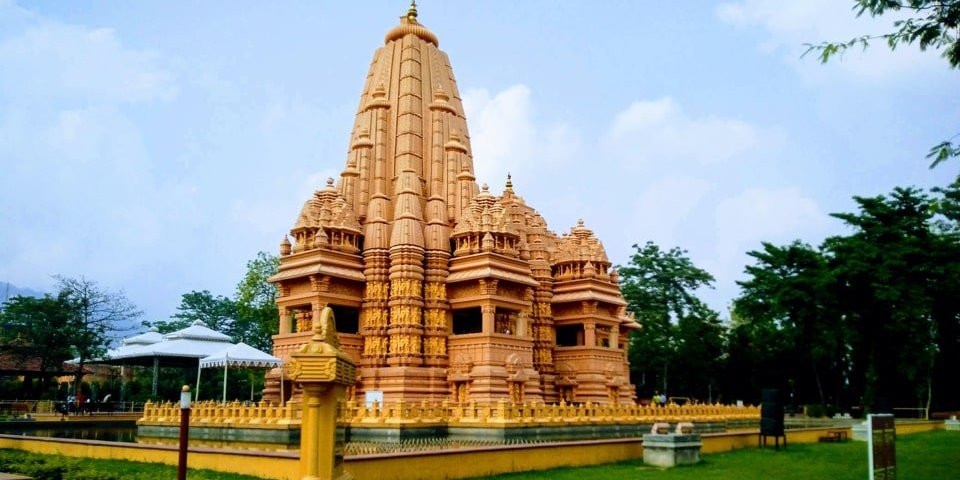
-
Natural Beauty and Wildlife: Chitwan National Park is the main attraction in the region, offering visitors the opportunity to embark on jungle safaris on elephant back, jeep drives, and canoe rides along the Rapti River. These safaris provide an intimate glimpse into the lives of the park's inhabitants, in a setting that is both breathtakingly wild and meticulously preserved. Bird watchers will also find Chitwan a paradise, with over 500 species recorded in the park.
-
Cultural Heritage: Beyond its natural wonders, Chitwan also offers a rich tapestry of cultural experiences. The indigenous Tharu community, known for their unique traditions, dances, and art, contributes to the region's cultural diversity. Visitors can explore Tharu villages, enjoy their traditional dances, and learn about their way of life, which is deeply intertwined with the natural environment of the Terai region.
-
Adventure and Activities: Apart from wildlife safaris, Chitwan offers a range of activities for adventure seekers and nature lovers. Canoe trips on the Rapti River provide a peaceful means to observe the park's rich birdlife and aquatic animals. Jungle walks and visits to the elephant breeding centers offer more ways to connect with the area's natural environment. For those seeking a thrill, there are opportunities for jungle camping and walking safaris that allow for a deeper exploration of the national park.
-
Conservation Efforts: Chitwan National Park is at the forefront of conservation efforts in Nepal, with successful programs aimed at protecting endangered species and their habitats. The park's efforts in rhino conservation, in particular, have been recognized globally. Visitors contribute to these conservation efforts through park fees and by participating in responsible tourism practices that respect the natural and cultural heritage of Chitwan.
-
Getting There: Chitwan is easily accessible from Kathmandu and Pokhara by road or air, with regular bus services and flights to Bharatpur Airport, followed by a short drive to the park area.
Chitwan offers a compelling blend of natural beauty, wildlife, and cultural experiences that showcase the diversity and richness of Nepal's natural and cultural landscapes. Whether you're an avid wildlife enthusiast, a culture seeker, or an adventure traveler, Chitwan provides a unique and unforgettable journey into the heart of Nepal's Terai region.
Tips for Highlight's on Nepal Pilgrimage Tour
Creating an engaging and informative Nepal Pilgrimage Tour requires highlighting the unique spiritual, cultural, and natural aspects of the destinations involved. Here are tips to ensure your highlights captivate potential travelers and provide them with all the reasons they need to embark on this sacred journey:
Emphasize Spiritual Significance
-
Diverse Pilgrimage Sites: Highlight the variety of pilgrimage sites, including Hindu temples, Buddhist stupas, and sites significant to both religions, such as Muktinath.
-
Sacred Stories and Myths: Share intriguing stories, legends, and myths associated with each site to pique interest and provide a deeper understanding of their spiritual importance.
Showcase Cultural Richness
-
Local Traditions and Festivals: Mention the unique cultural practices, rituals, and festivals observed at different pilgrimage sites, offering travelers a glimpse into the local way of life.
-
Cultural Interactions: Encourage engagement with local communities, such as the Tharu in Chitwan, to learn about their traditions, dances, and handicrafts.
Highlight Natural Beauty and Adventure
-
Himalayan Landscapes: Stress the breathtaking scenery of the Himalayas that travelers will experience, especially in areas like Annapurna and Everest regions.
-
Adventure Opportunities: Mention trekking, wildlife safaris in Chitwan, and other activities for a balanced experience of spirituality and adventure.
Include Practical Information
-
Best Times to Visit: Provide advice on the optimal seasons for visiting different pilgrimage sites, considering weather conditions and festival dates.
-
Travel Logistics: Tips on how to reach these sites, whether by trek, local transport, or flights, can be very helpful.
Focus on Unique Experiences
-
Yoga and Meditation Retreats: Highlight opportunities for spiritual growth through yoga and meditation sessions in serene settings.
-
Eco-Friendly and Sustainable Practices: Emphasize tours that promote sustainability and respect for the environment and local cultures.
Use Engaging Visuals and Testimonials
-
Photographs and Videos: Use high-quality images and videos to showcase the beauty and serenity of pilgrimage sites and the surrounding landscapes.
-
Traveler Reviews: Include testimonials from past travelers who have experienced spiritual growth or fulfillment to add authenticity and emotional appeal.
Offer Customizable Options
- Tailored Itineraries: Make it clear that itineraries can be customized to meet individual spiritual needs, interests, and physical capabilities, ensuring a personal and meaningful journey.
By incorporating these tips, your highlights for the Nepal Pilgrimage Tour will not only inform but also inspire travelers to embark on this journey of spiritual discovery and personal reflection, promising an unforgettable experience blending devotion, culture, and natural wonder.
The Nepal Pilgrimage Tour is a transformative journey that melds spiritual exploration with the awe-inspiring beauty of the Himalayas and the rich tapestry of Nepal's cultural heritage. Each destination, from the sacred sites of Kathmandu to the natural wonders of Chitwan, offers a unique glimpse into the soul of Nepal, inviting travelers to connect deeply with the divine, immerse in vibrant traditions, and revel in the majesty of the natural world. With Relax Getaways, this pilgrimage is not just a journey but a path to enlightenment, promising an experience that is as profound as it is unforgettable. Embrace this extraordinary adventure and discover the peace and spirituality that define the heart of Nepal's heritage.
FAQs for Highlights on Nepal Pilgrimage Tour: Exploring the Spiritual and Cultural Heritage of the Himalayas
Q: What makes the Nepal Pilgrimage Tour unique?
A: The tour uniquely combines visits to spiritual sites, cultural immersion, and the exploration of the Himalayas' natural beauty, offering a comprehensive experience of Nepal's rich spiritual and cultural heritage.
Q: Which destinations are included in the tour?
A: The tour covers key destinations such as Kathmandu, Pokhara, Muktinath, Manakamana, and Chitwan, each offering distinct spiritual, cultural, and natural experiences.
Q: Is the tour suitable for non-religious travelers?
A: Yes, the tour welcomes all travelers, offering rich cultural and natural experiences alongside spiritual visits, appealing to anyone interested in the Himalayas' heritage.
Q: What is the best time to go on the Nepal Pilgrimage Tour?
A: The optimal times are from October to November and March to April, featuring mild weather perfect for trekking and sightseeing.
Q: How physically demanding is the tour?
A: The tour's physical demand varies by destination. It can be customized to suit different fitness levels, ensuring a comfortable experience for all participants.
Q: Can the itinerary be customized?
A: Absolutely, itineraries can be tailored to meet personal preferences, abilities, and interests, ensuring a personalized and fulfilling journey.
Q: What should I pack for the tour?
A: Essential items include comfortable footwear, appropriate clothing for the season, a daypack, sun protection, and personal medications. Trekking tours may require additional gear.
Q: Are there opportunities for meditation or yoga?
A: Many tours include yoga and meditation sessions, especially in serene locations, enhancing the spiritual experience of the journey.
Q: How do I respect the local culture and religious practices?
A: Respecting local customs involves dressing modestly, removing shoes before entering sacred sites, and asking permission before photographing people or religious events.
Q: How do I book the Nepal Pilgrimage Tour?
A: Booking is easy through Relax Getaways' website or by contacting them directly. They provide detailed itineraries and customization options to ensure a memorable exploration of Nepal's spiritual and cultural landscapes.
For the Nepal Tour, please click here.
If you are looking for different kinds of Nepal Packages, feel free to contact us.
.jpg)






